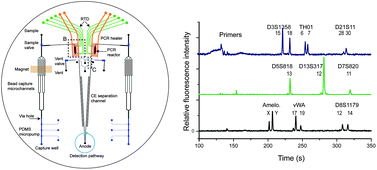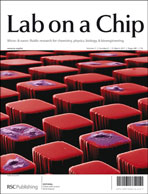Integrated DNA purification, PCR, sample cleanup, and capillary electrophoresis microchip for forensic human identification
Abstract
A fully integrated microdevice and process for forensic short tandem repeat (STR) analysis has been developed that includes sequence-specific DNA template


 Please wait while we load your content...
Please wait while we load your content...